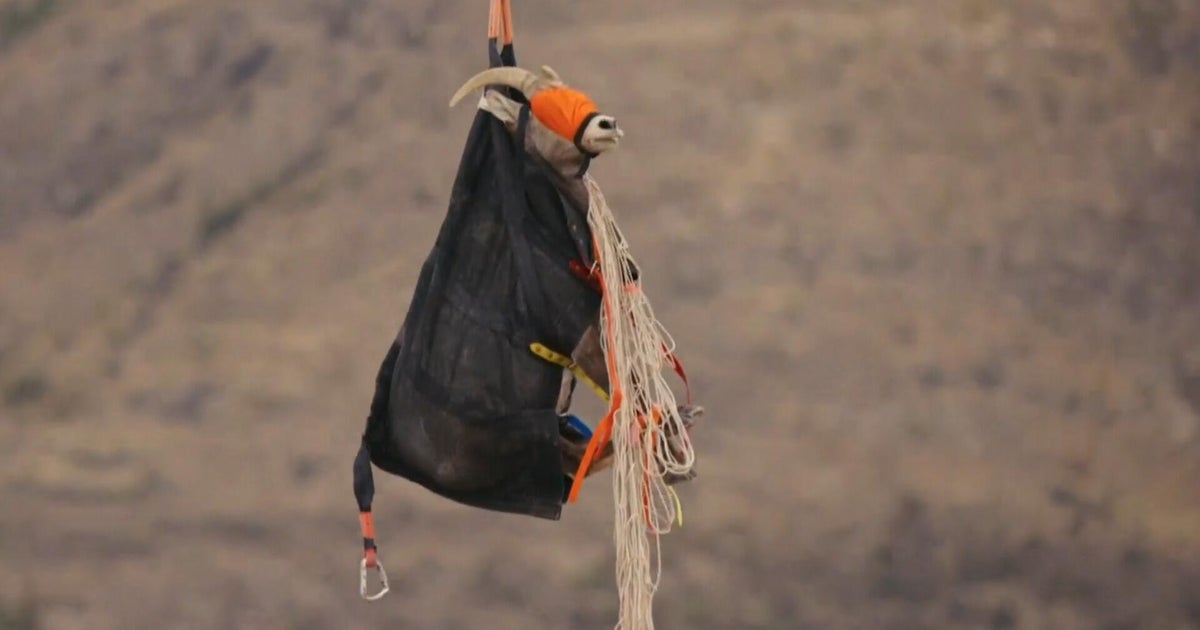Last fall, biologists captured dozens of bighorn sheep from the only disease-free herd left in Texas. Did it work? Jason Allen reports.
Why it matters
- The relocation of bighorn sheep is a crucial step in conserving the species, which has faced significant threats from disease.
- This initiative highlights the effectiveness of conservation strategies in protecting wildlife populations.
- The sighting of lambs is a positive sign that the relocated herd is adapting well to its new environment.
In a significant development for wildlife conservation in Texas, biologists have reported the sighting of healthy bighorn lambs, a promising outcome following the successful capture and relocation of several bighorn sheep from the state’s only disease-free herd last fall. This initiative aimed to combat the alarming decline of bighorn sheep populations in Texas, which have been severely impacted by disease outbreaks over the years.
Last autumn, wildlife experts undertook the challenging task of capturing dozens of bighorn sheep from the isolated herd in the state's remote mountains. The herd was selected due to its unique status as the last disease-free population in Texas, making it an invaluable genetic reservoir for future conservation efforts. The decision to relocate these sheep was driven by the urgent need to bolster the dwindling populations in other regions, where disease has wreaked havoc among herds.
The relocation process was meticulous, involving extensive planning and coordination among various wildlife agencies. Biologists and conservationists worked tirelessly to ensure that the sheep were transported safely and effectively to new habitats that would provide them with the necessary resources for survival. The relocation aimed not only to enhance the genetic diversity of the existing herds but also to establish a self-sustaining population in a new area.
The early signs of success came recently when biologists spotted several lambs in the area where the bighorn sheep were released. The sighting of these young animals is crucial as it indicates that the relocated sheep are not only surviving but also reproducing in their new environment. Such outcomes are vital for the long-term viability of the species, which has faced significant challenges due to habitat loss, competition with domestic livestock, and diseases like pneumonia.
Bighorn sheep are a species native to the mountainous regions of North America and are well-known for their impressive horns and agile climbing abilities. However, their populations have been declining drastically in Texas, where they once roamed freely. Conservation efforts such as this relocation initiative are essential for reversing these trends and ensuring that future generations can enjoy the sight of these magnificent animals in their natural habitats.
Experts emphasize the importance of ongoing monitoring and research following such relocations. By tracking the health and behavior of the relocated bighorn sheep, biologists can gather data that will inform future conservation strategies and ensure the success of these efforts. The success of this initiative could serve as a model for similar projects across the country, where wildlife populations face threats from various environmental pressures.
In addition to the ecological benefits of restoring bighorn sheep populations, these efforts also contribute to the broader health of the ecosystems in which they reside. As a keystone species, bighorn sheep play a vital role in maintaining the balance of their habitats by influencing vegetation patterns and providing food sources for predators.
The recent lamb sightings have sparked renewed optimism among conservationists and biologists, who view this as a significant step forward in the fight to protect bighorn sheep in Texas. As they continue to monitor the herd and implement further conservation measures, there is hope that this will mark a turning point for the species in the region.
As awareness grows about the threats facing wildlife, initiatives like the relocation of bighorn sheep highlight the importance of proactive conservation measures. With continued support and investment in wildlife preservation efforts, there is potential for bighorn sheep populations to thrive once again in Texas, ensuring that these iconic animals remain a part of the state's natural heritage for years to come.











